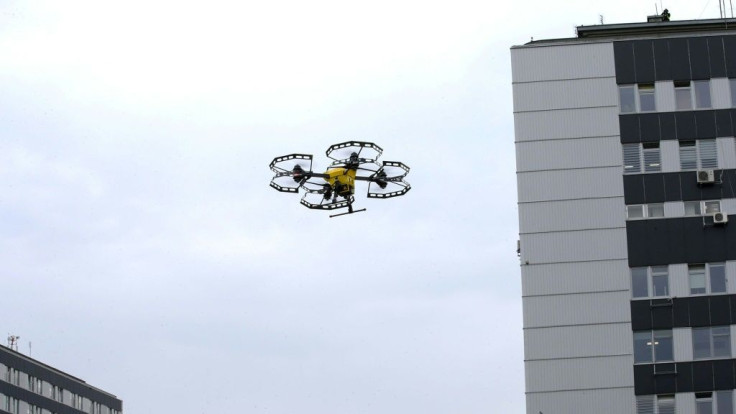Technology During Coronavirus: Could Medical Drones Be An Effective Tool To Tackle The Crisis?

As coronavirus has prompted concerns about whether vital medical supplies could reach individuals in need, drones that airdrop personal protection equipment, treatments and other items could play a crucial role in tackling the crisis.
Since the coronavirus is highly contagious, citizens may be cautious about going to a medical facility for supplies. Drones alleviate this concern, by delivering health goods to those in need without human contact.
San Francisco-based startup Zipline has used drones to deliver blood and medical supplies to health facilities in Rwanda since 2016 and has expanded to Ghana. Now, the company wants to expand its services in the United States, with Zipline having two distribution centers in California that operate as test facilities. Zipline can reportedly begin making drone deliveries once it receives the green light from the Federal Aviation Administration.
"The good news is that there is technology like this available," Zipline CEO Keller Rinaudo told CNN Business. "The U.S. is falling behind and COVID-19 will be a good chance for us to step into the future and start building infrastructure for the 21st century."
Some parts of the U.S. are already seeing medical supplies being delivered by drones. In one Florida retirement community, CVS and UPS will begin making deliveries of prescription medication by drone in order to protect elderly citizens.
“Our new drone delivery service will help CVS provide safe and efficient deliveries of medicines to this large retirement community, enabling residents to receive medications without leaving their homes,” Scott Price, UPS chief strategy and communications officer, said in a press release Monday. “UPS is committed to playing its part in fighting COVID-19, and this is another way we can support our healthcare customers and individuals with innovative solutions.”
As states vie for medical supplies amid the coronavirus crisis, drones may make the distribution process more efficient. For now, drone companies will need to deal with U.S. regulators before unmanned aerial vehicles become a permanent fixture of the American medical system.
© Copyright IBTimes 2025. All rights reserved.



















